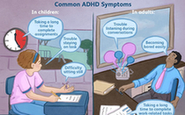Human Metapneumovirus ICD 10 Code: Essential Information
ICD-10-CM Code for Human Metapneumovirus Pneumonia J12.3 is a specific code that helps healthcare providers identify and classify cases of pneumonia caused by the human metapneumovirus. This code is important for accurate diagnosis and treatment of patients with this condition. The ICD-10-CM code system provides a standardized way of coding medical diagnoses, which helps in tracking disease outbreaks and trends, research and to determine reimbursement for medical services. Healthcare providers must stay up-to-date with the latest codes to ensure proper documentation and billing procedures are followed.

Understanding Human Metapneumovirus ICD-10 Codes
Have you ever been to a medical facility and seen those codes written on your diagnosis report? Those are human metapneumovirus ICD 10 codes, which stand for International Classification of Diseases, Tenth Revision, and Clinical Modification. They are used to classify and code diagnoses, symptoms, and procedures in the healthcare industry. In this blog post, we will explore one such ICD-10-CM diagnosis code, which is Human Metapneumovirus or HMPV. We will discuss what it is, how it affects the respiratory system, and its association with pneumonia and acute bronchiolitis. We will also outline the complications associated with HMPV pneumonia and talk about the management and treatment of conditions related to Human Metapneumovirus. So stay tuned as we take a deep dive into understanding this critical ICD-10-CM diagnosis code.
Understanding ICD-10-CM Diagnosis Code (human metapneumovirus infection)
AdvertisementICD-10-CM is an essential coding system in the healthcare industry that enables the classification and reporting of medical diagnoses, including Medicare. It provides a standardized approach to communicating diagnoses, which is crucial for purposes such as billing, research, and statistical analysis. Healthcare providers must be proficient in using ICD-10-CM codes, including Medicare, to accurately document and report diagnoses.
These codes are made up of alphanumeric characters that represent specific diseases, conditions, or injuries. Using the correct ICD-10-CM code ensures accurate reimbursement and proper tracking of patient conditions. It also helps in identifying trends in health issues and assists with public health initiatives.
The ICD-10-CM system is constantly evolving with regular updates to keep up with changing medical terminology and advances in medical technology. Healthcare professionals need to stay abreast of these changes to ensure compliance with regulatory requirements. The use of electronic health records has made it easier to incorporate ICD-10-CM codes into documentation, streamlining the process for healthcare providers and improving patient care.

Relevance of ICD-10-CM in Respiratory Diseases
ICD-10-CM codes are a vital tool for respiratory disease documentation and classification. These codes can identify various conditions like asthma, COPD, and pneumonia, among others. Accurate coding is imperative for reimbursement, research, and analysis of diseases. In addition to this, the codes also provide historical information that can be used for public health monitoring purposes.
AdvertisementThe use of these codes enables healthcare providers to assess the prevalence and impact of respiratory diseases in different populations. This information can further help in developing effective prevention strategies and improving patient outcomes. Therefore, it is essential to ensure accurate coding when documenting respiratory diseases to facilitate better healthcare delivery and management.
An Overview of Human Metapneumovirus ( human metapneumovirus as the cause )
Human Metapneumovirus (HMPV) is a respiratory virus that causes upper and lower respiratory tract infections. It is a common cause of respiratory illness, especially in young children, older adults, and individuals with weakened immune systems. HMPV shares similarities with other respiratory viruses like influenza and respiratory syncytial virus (RSV). Symptoms of HMPV infection include cough, fever, runny nose, and difficulty breathing. Proper diagnosis and management of HMPV infections are essential to prevent complications and ensure appropriate treatment.
How does Human Metapneumovirus affect the respiratory system?
Human Metapneumovirus (HMPV) primarily affects the respiratory system, causing inflammation and damage to the airways. The virus can infect various parts of the respiratory tract, including the nose, throat, windpipe, bronchi, and lungs. This can lead to conditions such as bronchitis, bronchiolitis, and pneumonia. Infants, older adults, and individuals with underlying health conditions are at a higher risk of developing severe respiratory illness due to HMPV. Understanding the impact of this virus on the respiratory system is crucial for targeted treatment and management.
Human Metapneumovirus and Pneumonia
AdvertisementHuman metapneumovirus (HMPV) is known to cause pneumonia, a severe infection that inflames the air sacs in the lungs. Common symptoms of HMPV pneumonia include cough, fever, chest pain, and difficulty breathing. Early diagnosis and appropriate treatment are essential for managing HMPV pneumonia. Identifying the specific ICD-10-CM code for HMPV pneumonia ensures accurate tracking and reporting of cases, supporting research on HMPV-related pneumonia and facilitating proper reimbursement. Additional codes may be used to provide more detailed information, such as historical data on tobacco use or tobacco dependence, which can impact the severity and management of HMPV pneumonia.
Accurate coding is crucial for comprehensive documentation and understanding of the impact of HMPV on respiratory health. Moreover, it helps healthcare providers to get a better insight into various aspects related to the disease. Proper coding can also help in identifying trends in disease incidence, risk factors associated with different demographic groups, and the effectiveness of treatments over time. Ultimately, accurate coding is essential for promoting optimal patient care and improving public health outcomes related to respiratory infections caused by HMPV.
What are the complications associated with Human Metapneumovirus Pneumonia?
Also Read More Artical
- Human Metapneumovirus ICD 10 Code: Essential Information
- hba1c normal range chart | hba1c Test (normal hba1c)
- How to Ensure Insurance Covers Revision Bariatric Surgery: (weight loss surgery) A Comprehensive Guide
- How derma rollers may help beard growth
- What Are the 10 Types of Mental Disorders
HMPV pneumonia can lead to several complications, including respiratory failure, secondary bacterial infections, and exacerbations of underlying respiratory conditions. Severe cases may require hospitalization and intensive care. In addition to these short-term consequences, patients may also experience long-term complications such as lung scarring or damage.
Accurate coding is crucial for monitoring the disease’s impact on patient outcomes and supporting research efforts for prevention and treatment strategies. By tracking the incidence and severity of HMPV pneumonia, healthcare providers can better understand the disease and develop effective treatment protocols. It also helps in identifying high-risk groups that need special attention to manage the disease’s long-term effects. Overall, effective management of HMPV pneumonia requires a comprehensive approach that considers both short-term and long-term outcomes.

Human Metapneumovirus in Acute Bronchiolitis
HMPV, or human metapneumovirus, is a common contributor to acute bronchiolitis, particularly in young children. Acute bronchiolitis refers to inflammation and constriction of the small airways in the lungs caused by an infection. The symptoms associated with this condition include coughing, wheezing, rapid breathing, as well as difficulties with feeding and breathing. An accurate diagnosis and management plan for HMPV-related bronchiolitis is crucial to prevent potential complications.
Proper coding of HMPV-related bronchiolitis cases is important for monitoring and reporting purposes, aiding research efforts, and evaluating treatment outcomes. Additionally, it is essential to follow guidelines for infection control measures to prevent the spread of HMPV and other respiratory viruses in healthcare settings. Early recognition and appropriate management can improve outcomes for patients with HMPV-related bronchiolitis.
AdvertisementManagement and Treatment of Conditions Related to Human Metapneumovirus.
Human Metapneumovirus is a respiratory virus that can lead to a range of symptoms, from mild to severe. The diagnosis is usually made by taking respiratory samples and using molecular testing. Management of the condition typically involves supportive care to alleviate symptoms like fever and coughing. It is critical to take preventive measures to stop the spread of the virus, including hand hygiene and avoiding contact with infected individuals. Immunocompromised patients and those at higher risk require additional code documentation and appropriate management strategies. Follow-up care is also crucial in monitoring recovery and addressing any remaining complications. Prompt diagnosis, proper treatment, and preventive measures can help manage Human Metapneumovirus infection effectively.
Frequently Asked Questions
What is the ICD-10 code for Human metapneumovirus detected?
– The ICD-10 code for detecting Human Metapneumovirus is B97.4.
– This code is used to indicate the presence of the virus in a patient’s test results, ensuring accurate medical billing and research.
– Stay updated with the annual changes to ICD-10 codes for precision in diagnosis.
What is Human metapneumovirus pneumonia?
Human metapneumovirus pneumonia is a respiratory illness caused by the human metapneumovirus, which can lead to symptoms like fever, cough, and shortness of breath. The ICD-10-CM diagnosis code for this condition is J12.81. If you suspect that you have contracted this illness, it is important to seek medical attention promptly. Treatment options may include rest, hydration, and over-the-counter medications for symptom relief. While most people will make a full recovery from human metapneumovirus pneumonia with proper care and treatment, individuals with weakened immune systems or underlying health conditions may be at greater risk for complications.
How do you treat Human metapneumovirus?
Human metapneumovirus (HMPV) treatment is primarily aimed at alleviating the symptoms associated with the virus, such as fever and respiratory distress. Over-the-counter medications are usually recommended for managing fever and pain. In severe cases, hospitalization may be required to provide supportive care, including oxygen therapy. Although there is no specific treatment for HMPV, prevention measures can help reduce the risk of infection. These measures include frequent hand washing, avoiding close contact with sick individuals, and practicing good respiratory hygiene like covering your mouth when you cough or sneeze. It’s also important to seek medical attention if you experience severe symptoms or have underlying health conditions that put you at greater risk of complications from HMPV infection.
How is human metapneumovirus diagnosed using ICD-10 codes?
ICD-10 codes are used for the diagnosis of various medical conditions, including human metapneumovirus. The specific code used for this respiratory infection is J21.1, which is typically used for acute bronchiolitis caused by the virus. Accurate coding of this condition is crucial for proper billing and recordkeeping, which in turn facilitates effective management and treatment. By using the correct ICD-10 code, healthcare professionals can ensure that patients receive appropriate care and treatment while also maintaining accurate medical records.
What are the symptoms of Human metapneumovirus pneumonia?
Human metapneumovirus is a type of respiratory virus that can cause pneumonia, which is characterized by fever, cough, and difficulty breathing. Other possible symptoms include wheezing, chest pain, and fatigue. In severe cases, it can lead to respiratory failure and even death. Early diagnosis and treatment are essential for managing symptoms and preventing complications.
It’s important to note that human metapneumovirus infection can affect people of all ages, but it is more common in young children, older adults, and those with weakened immune systems. Treatment usually involves managing symptoms with medications such as antipyretics for fever reduction and bronchodilators for alleviating breathing difficulties. In some cases, hospitalization may be necessary for patients who develop severe pneumonia or respiratory failure.
Prevention measures such as washing hands frequently with soap and water, avoiding close contact with sick individuals, covering the mouth while coughing or sneezing, and disinfecting surfaces regularly can help reduce the risk of contracting the virus. Vaccines are currently not available for human metapneumovirus infections; therefore, taking preventive measures is crucial to stay healthy and prevent the spread of the virus.
Conclusion
Understanding the ICD-10-CM code for Human Metapneumovirus is crucial. This virus causes respiratory diseases like pneumonia and acute bronchiolitis. Be aware of the symptoms, effects on the respiratory system, and treatment options. Using the correct code ensures accurate communication, billing, and research related to this virus. Stay informed to manage and prevent its spread.






